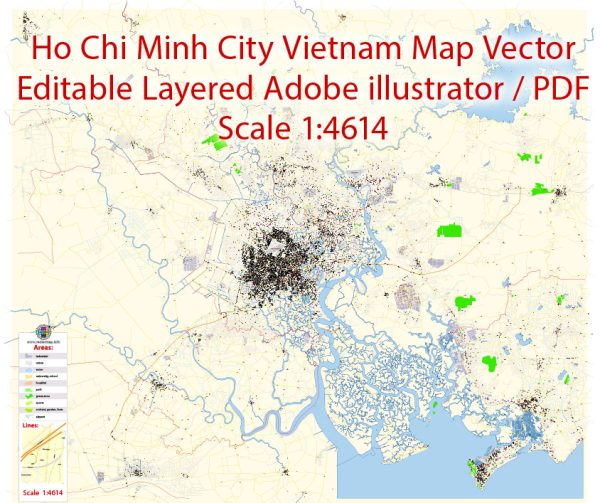Ho Chi Minh City, formerly known as Saigon, has a rich history of urban development that reflects the various phases of its political, cultural, and economic evolution. Here is a brief overview:
- Pre-colonial Period:
- The area that is now Ho Chi Minh City has a long history dating back to the pre-colonial era when it was inhabited by Khmer people.
- The fertile land attracted settlers who engaged in agriculture and trade along the Mekong River.
- Colonial Period (19th-20th Century):
- In the 19th century, French colonial forces arrived in Vietnam, and Saigon became the capital of French Cochinchina.
- The French influence is evident in the city’s architecture, with wide boulevards, colonial villas, and government buildings constructed during this period.
- Vietnamese Independence (mid-20th Century):
- After World War II, Vietnam declared its independence from French rule in 1945.
- The First Indochina War followed, culminating in the 1954 Geneva Accords, which temporarily divided Vietnam into North and South.
- Saigon became the capital of South Vietnam, and rapid urbanization ensued as the city attracted migrants from rural areas.
- Vietnam War and the Fall of Saigon (1960s-1975):
- The Vietnam War had a significant impact on the city, with extensive destruction caused by bombings and military operations.
- In 1975, the city fell to North Vietnamese forces, leading to the reunification of North and South Vietnam. The city was renamed Ho Chi Minh City.
- Post-War Reconstruction (late 20th Century):
- The post-war period saw efforts to rebuild and reconstruct the city. However, economic challenges persisted, and the city faced issues related to overpopulation and inadequate infrastructure.
- Đổi Mới Reforms (1986 onwards):
- In the mid-1980s, the Vietnamese government introduced economic reforms known as Đổi Mới, leading to a shift towards a market-oriented economy.
- Ho Chi Minh City became a hub for economic activities, with rapid industrialization, foreign investment, and a burgeoning middle class.
- Contemporary Urban Development (21st Century):
- Ho Chi Minh City has experienced rapid urbanization, resulting in the development of modern skyscrapers, shopping malls, and a vibrant urban landscape.
- The city continues to face challenges such as traffic congestion, environmental issues, and the need for sustainable development.
- Infrastructure and Modernization:
- Ongoing infrastructure projects, such as the expansion of the metro system and improvements in transportation, are aimed at addressing the city’s growing needs.
- The skyline of Ho Chi Minh City showcases a blend of colonial-era structures, Soviet-style apartment buildings, and modern architectural marvels.
Overall, Ho Chi Minh City’s history of urban development is a reflection of Vietnam’s journey from colonial rule through the tumultuous periods of war to its current status as a dynamic and rapidly developing metropolis.


 Author: Kirill Shrayber, Ph.D.
Author: Kirill Shrayber, Ph.D.